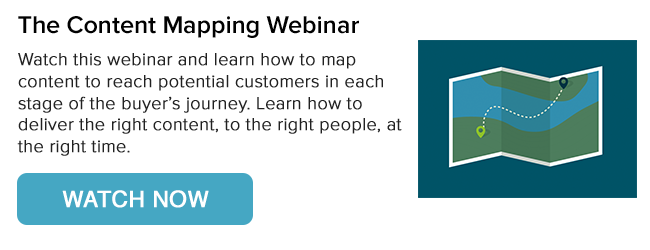
What makes for a successful family road trip? Some may argue that it’s a solid mix of entertainment and snack packs, but many seasoned vacationers know that in order to arrive at their destination unscathed, they need to pinpoint their exact route, find the right vehicle, fill up the gas tank, and double check their emergency toolbox before they can even think about hitting the open road.
Content planning is a similar undertaking. Today’s buyers are willing to travel, but need a little nurturing from you to get to the right destination.
Want to ensure you’re delivering the right content to the right people at the right time? Pair your content planning with the three stages of the buyer’s journey. The quick guide below will show you how to do just that and get well on your way to creating your most successful content to date.
1) Pinpoint the Route
First thing’s first — your roadmap should always lead travelers through the same three destinations: awareness, consideration, and decision. Whether you’re B2B or B2C, you need to have a firm grasp on your audience and buyer personas so you can select the right piece of content for each reader.
Awareness
Users are noticing symptoms and/or they are realizing a problem exists. Therefore, they are seeking educational, third-party content in the awareness stage. They want light, vendor-neutral information that will help them identify their specific problem.
Consideration
Having discovered what the exact issue is, those in the consideration stage are committed to solving their problem and are searching for content to help them do just that. At this point, they’re most focused on solutions and comparisons.
Decision
In the decision stage, users have decided how they will solve their problem and they are simply seeking validation in determining their short list and selecting a final vendor. They need (and want!) you to help close the deal.
2) Choose the Right Vehicle
Content is your main vehicle for delivering your message to your audience. Just like Hondas and Nissans, content comes in many makes and models. Again, you can use the buyer’s journey to help you determine which vehicle each customer belongs in.
Awareness
Users rely on white papers, research reports, editorial content, educational content, ebooks, social media, and blogs.
Consideration
Users become more interested in comparison white papers, expert guides, webcasts, podcasts, and videos.
Decision
Users are looking for influencing information in the form of vendor/product comparisons, case studies, trial downloads, and live demos.
3) Fill Up Your Gas Tank
Content planning can easily put…put…putter out when you aren’t organized. From email and landing page copy, to titles and subject lines, to tweets and blog posts, everything has to work together so it can effectively speak to the target audience. Avoid coming up empty by using a few relevant words to help focus your content creation. Below are a few suggestions to get you started.
Awareness
- Troubleshoot
- Issue
- Resolve
- Risks
- Upgrade
- Improve
- Optimize
- Prevent
Consideration
- Solution
- Provider
- Service
- Supplier
- Tool
- Device
- Software
- Appliance
Decision
- Compare
- Versus
- Pros and Cons
- Benchmarks
- Review
- Test
4) Have Your Toolbox Within Reach
Keeping everything on your editorial calendar congruent can be difficult when you have to consider the type of content, topic, buyer’s journey stage, title, keywords, target persona, offer/CTA, and accompanying social posts for each piece of content you create. But having a plan and process is key — so make sure you have the right software in place to help you manage it all.
Want more help on content mapping? Watch this on-demand webinar.
![]()






